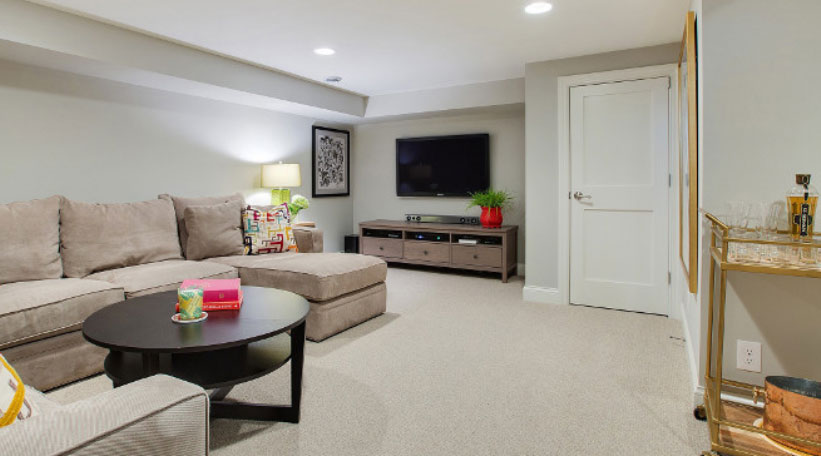Without any natural light, interior rooms can be a challenge to decorate—but it’s a challenge that these creative ideas will help you overcome.
By Diane Franklin
An interior bathroom, a basement rec room and an off-the-kitchen laundry room are among the areas in your home that may be noteworthy for what they are lacking—windows. The lack of natural light and openness that windows provide may seem like a detriment, but there are ways to overcome any perceived problems by trying a few of these simple tips.
- Use white or light paint colors. Rooms without windows can seem confining, but white or lighter paint colors will help the room seem bigger than it actually is. In addition to whites or off-whites, you might also want to consider light blues, greens and other nature-inspired hues.
- Make the lighting count. You’ll need to have good lighting in the room to compensate for what nature can’t provide. Have several sources of lighting—for instance, in a bathroom, use wall lights above the vanity and recessed lights above the shower. For a finished basement, make sure you use various kinds of lighting—i.e., table lamps, floor lamps, recessed lights, pendants, etc.—throughout the space so that it does seem too dark or shadowy.
- Uses framed mirrors. Not only will a framed mirror mimic the look of a window, but it will also give greater depth to the room as if extending the view beyond the four walls.
- Bring natural elements into the room. Whether it’s a floral wallpaper, a beachscape painting or a full-scale Tuscan wall mural, an element that “brings the outdoors in” will make the absence of a window seem less of an issue.
- Fake the real thing. Paint a trompe l’oeil window that provides the view of a faux idyllic nature scene. If you don’t have the painting talent to do so, hire a muralist to create one for you—or look for that effect in a wallpaper mural. Other ways to “fake” a window: Mount interior shutters on the wall or, if the room is large enough, hang full-length draperies to create a more formal look.
- Open up the space. For rooms where privacy is not an issue, construct a transom window above a doorway or use French doors to make the space seem less confined.
- Fill the walls. Nothing draws attention to the absence of a window like bare walls. Instead, make sure your walls have interesting artwork (scaled appropriately to the size of the room). Perhaps use a floor-to-ceiling bookshelf to fill the space. For some spaces, like finished basements, consider putting in a prefabricated fireplace. Not only will it add visual interest, but it’s another source of light that will make the lack of windows less obvious.
- Use the windowless setting to your advantage. Sometimes a lack of natural light is a good thing—for instance, in the case of a home theater or a TV room. Without natural light shining through the windows, you’ll be able to enhance your viewing experience. Additionally, a room without windows might be the perfect setting for your home office—no worries about sunlight causing glare on your computer screen, and the privacy might be just what you need to avoid distractions.

 Interior Paints
Interior Paints Exterior Paints
Exterior Paints Primers
Primers Stains & Clears
Stains & Clears
 Paint Brushes
Paint Brushes Paint Roller
Paint Roller Paint Trays & Liners
Paint Trays & Liners



